#Cyber-Bullying
Explore tagged Tumblr posts
Text
I mean, hell will freeze over before two billionaires go to prison for being bigots, at most I expect a fine that'll be like pocket change to them (though their pocket change would probably be life-changing wealth for Imane Khelif, since the world is deeply unfair).
But it would be nice.

MANIFEST
MANIFEST
211K notes
·
View notes
Text
Mobile Phones and Kids: Balancing Benefits and Risks
Mobile phones impact children's mental health and social behavior significantly.
In today’s digital age, mobile phones have become an integral part of our lives, including those of children and teenagers. While mobile phones offer numerous benefits, their use among youngsters, especially those under sixteen, has sparked considerable debate. Studies suggest that children under sixteen should not be given mobile phones due to their delicate brains being unable to tolerate the…
#benefits#cyber-bullying#Digital Age#kids#Mental Health#mobile phones#panvel#responsible use#risks#screen addiction#social connection#thepanvelite
0 notes
Photo

Source: existennialmemes
7K notes
·
View notes
Text
PSA (because I know we’re all so excited for Nico but this needs to be said): YOU CANNOT PUT NICO’S IDENTITY ONTO THE SMOL BOY WHOS GOING TO PLAY HIM.
IF THE ACTOR TURNS OUT NOT TO BE GAY AS THE YEARS GO BY WE ARE GOING TO LOVE AND RESPECT HIM REGARDLESS!!
IF ANYONE IN THIS FANDOM KIT CONNORS A FRIGGIN TEN YEAR OLD I WILL FIND YOU AND RIP OUT YOUR SPINE!!!!
EVERYONE’S EXCITED FOR OUR GAY DISNEY PRINCE BUT PLEASE REMEMBER THAT THE ACTOR ISN’T NICO, AND WILL HAVE HIS OWN IDENTITY THAT HE NEEDS TO FIND OUT FOR HIMSELF AND NOT SHOVED ON HIM BY A BUNCH OF RANDOM FANS THAT DON’T EVEN KNOW HIM!!!
Please I know everyone is excited but I am so scared for this kid
#pjo#percy jackon and the olympians#nico di angelo#percy jackson#pjo tv series#percy jackson show#I’ll do it#I’m serious#I’m THROWING HANDS with anyone who tries to put Nico’s identity on his baby actor#he might end up being gay but he needs to not be forced into that#please don’t cyber bully the child#I’m literally begging y’all
10K notes
·
View notes
Text
It is estimated those with ADHD receive 20,000 corrective or negative messages by age 10
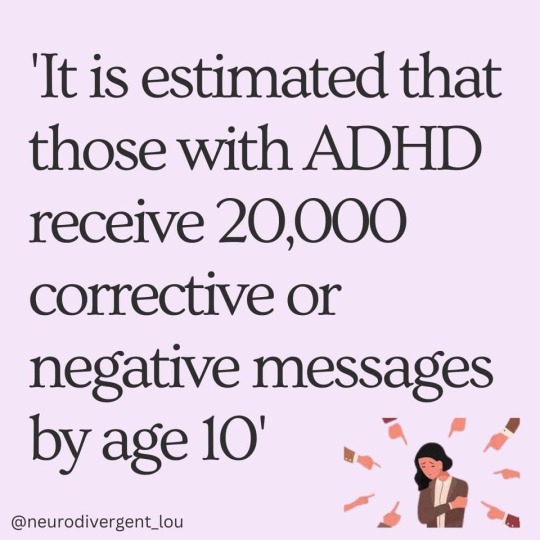

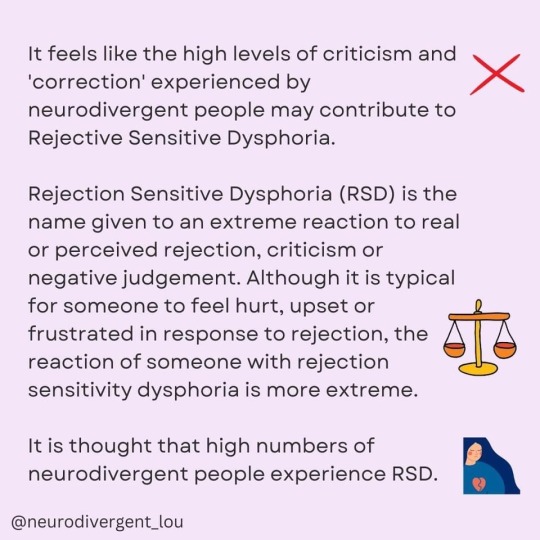
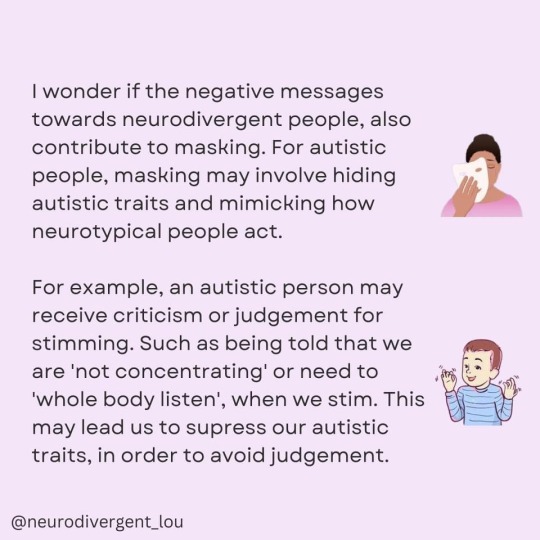
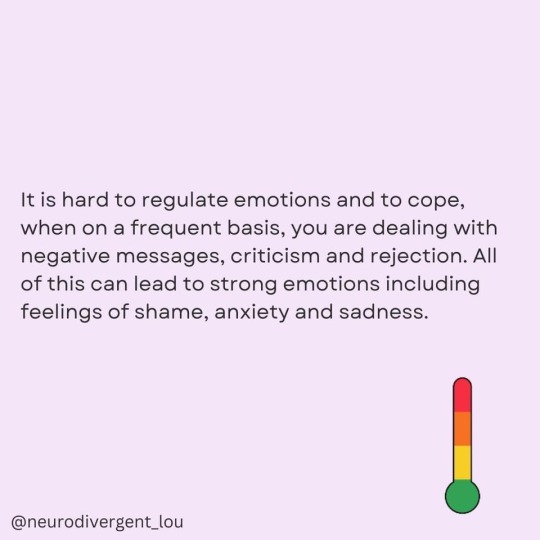
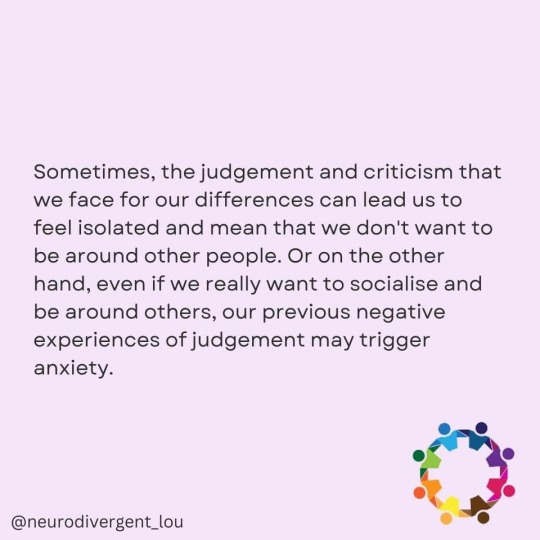
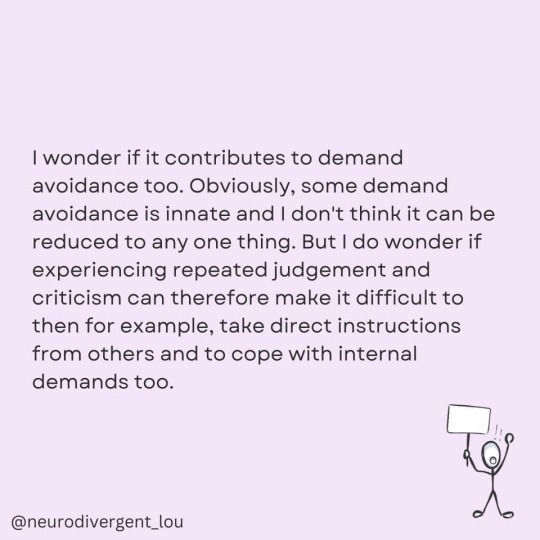
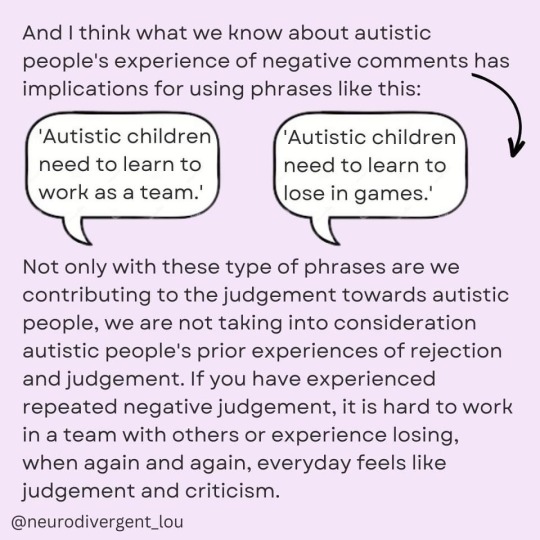
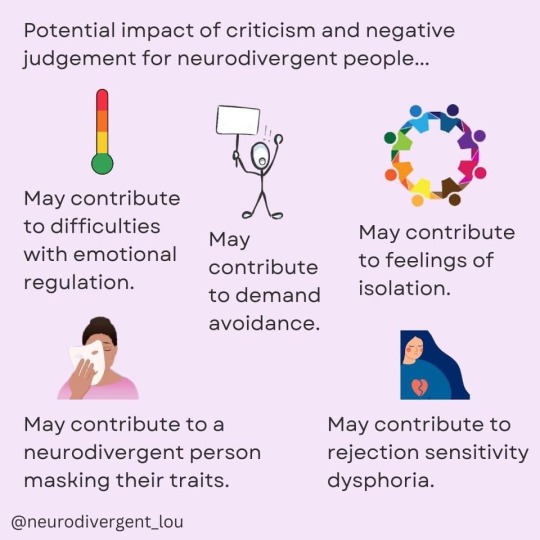
Neurodivergent_lou
#autism#actually autistic#adhd#adhd post#rejective sensitive dysphoria#rsd#tw bullying#mental health#tw cyber bullying#neurodivergence#neurodiversity#actually neurodivergent#NTs can experience this too (at least I think so)#feel free to share/reblog#Neurodivergent_lou (Facebook)
3K notes
·
View notes
Text


marie would cancel someone on twitter
#Splatoon#splatoon marie#splatoon callie#squid sisters#callie cuttlefish#marie cuttlefish#not now sweaty mommy’s cyber bullying#splatoon meme#meme#splatoon fanart#fanart#my art#artists on tumblr
1K notes
·
View notes
Text
listen up kids, if you feel as though you are being stalked/threatened/whatever unsafe thing on this platform or any platform it is perfectly ok to disable your account, stop posting, make a new blog, get off the internet, etc. just cause tumblr is a piece of crap social media doesn’t mean that you still can’t get stalked here. or ao3 or wherever. you owe toxic people, stalkers and groomers nothing. if it’s ever a question of your own safety remove yourself entirely from the situation, stop posting, report their accounts and come back only when you think it’s safe, even if you have to create a whole new blog. you’ll find your people again and they will treat you better than the ones who are stalking you.
#not a tag#from saph#a reminder to all#also maybe don’t be shitty to people online ??#uncool#dont make me play the cyber bullying videos they showed us in 7th grade
2K notes
·
View notes
Text
anyone who is serious about racism in evil empire wouldn't be happily performing for millions of dollars at evil empires main sports event full of evil empires military ads. be fr.
#where's that malcolm x quote how ridiculous is that black celebs are considered authorities on black movement#liz.txt#yall cyber bullying ppl for those black bougie celebs...#yanks be yanks
220 notes
·
View notes
Text
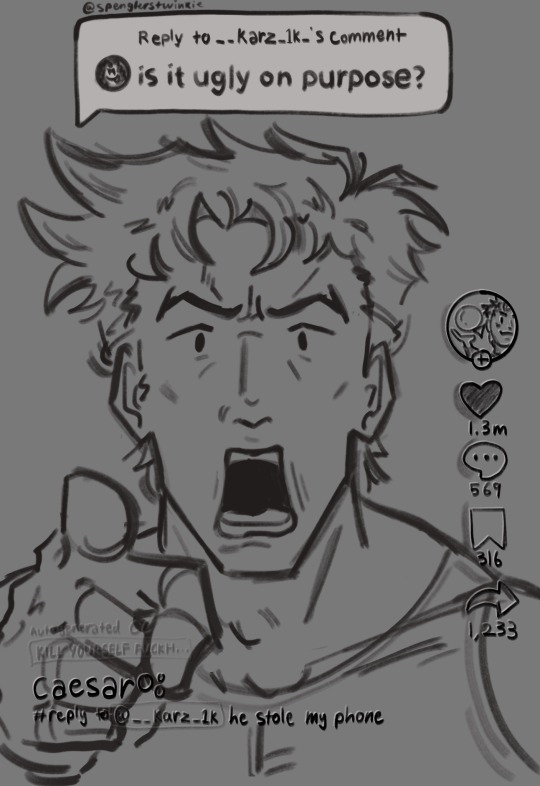
30 days to train aka 30 days for kars to cyber bully joseph
#caesar zeppeli#joseph joestar#kars jjba#kars#jojo's bizarre adventure#jojo no kimyou na bouken#jojoke#jojo fanart#idk#redraw of a traditional doodle I did while skipping clubs#30 days kars’s ass that’s 30 days to cyber bully joseph while he trains#some modern au where phones exist I guess#and caesar has tiktok#caejose#I guess#if you squint#probably not but whatever#I mean you don’t know what kars is replying to#what#not implying anything gay between caesar and joseph at all#user spenglerstwinkie on tumblr thinking caesar and joseph are gay? what? never#never#…#I’m gonna stop yapping#they might be gay#bro joseph’s SLUTTY ASS TANK TOP LORD.#coming out as a kars hater I’m sorry his pretty hair doesn’t make up for it. wamuu 4L#alright I’m done#battle tendency#jojo part 2
464 notes
·
View notes
Note
gay, furry, and BRITISH?!
Pick one struggle dude, leave some for the rest of us

89 notes
·
View notes
Text






anyway. this is all the same person. @staff i’m so fucking tired
#jumblr#antisemitism#anon hate#anon harassment#fuck you anon#leftist antisemitism#jew hatred#jew haters#tw harassment#cyber harassment#cyber bullying#online harassment#inbox#anon
296 notes
·
View notes
Text
A couple months after Kate joins the Tornado Wranglers, Tyler uploads a video to their YouTube channel. But instead of it being him and Boone in the truck, it's just Tyler sitting in a motel room by himself, and addressing the camera full-on.
"Kate Carter is one of the smartest people I have ever met," he says. "She figured out a way to disintegrate tornadoes, do you guys know how huge that is? Do you know how important that is? It's amazing. She's amazing. And yes, you have the right to your own opinions, but a lot of those opinions that I see - that we all see - in the comments seem to be based on very face-value judgments. Because if you really knew her, if you took the time to learn how awesome she is and what she's done - and is continuing to do - for this world then you would not be making comments like that. You think we don't really know what being a "Kater" means? We know you're not fans, we know you're literally "Kate Haters" so let me just say this - it will not be tolerated. Myself and the Wranglers LOVE our fans, and we love that you help spread awareness for our causes and you share our videos to help teach people about tornadoes and tornado safety, and that's awesome. But Kate Carter is one of the Tornado Wranglers now, and that is not going to change any time soon...not unless she ever wants it to. And I hope she never does, because she is a great asset to our team. So if you care about the Wranglers, you will recognize that Kate is one of us, and if you don't like her, or don't like somebody else on our team, that's fine. You're entitled to your opinion, but don't go filling up our socials with hateful comments when all we are trying to do is make this country and the world a better and safer place to live in. Yes, Kate and I are dating, but that is nobody's business. She doesn't like her private life to be made public on social media and neither do I, which is why this YouTube page is about chasing tornadoes and not a video diary about what we do on the weekends when we're not driving in those trucks."
"...Growing up in Arkansas, my mama always raised me on the rule that if you can't say anything nice, don't say anything at all." he said. "Show us your support by showing respect, or just leave the comment box blank. If you feel it, you should chase it - but you don't always have to say it. Stay safe out there and we'll see you on the next ride."
This video became one of the Wranglers most shared videos and in the weeks that followed Kate got such a huge outpouring of love from the fans (including a few fan pages dedicated personally to her) that she was brought to tears (happy tears) more than once.
#twisters headcanon#twisters#twisters 2024#twisters movie#kate x tyler#tw: cyber bullying#cyber bullying#Tyler will always stick up for his Sapulpa girl <3#kate carter#tyler owens#tornado wranglers
226 notes
·
View notes
Text
I just want to say:
If you are the type of fandom inhabitant that sends threats, tells people to kill themselves, harasses, abuses, doxxs, etc, other people in your fandom for the things they read/write/draw/whatever because you either don’t like it/disapprove of it/whatever, you are the problem.
If you don’t like something, that’s fine.
But you don’t get to go onto other fans’ works and harass them because you don’t like the thing.
You don’t ever have the right to mistreat other people because of your beliefs and preferences.
And if, for one second, you think that behaviour is okay, you need to stop, take a deep breath, and get off the internet. Go touch grass or something.
185 notes
·
View notes
Text

🪐 Studying my latest blorbo under the microscop..... . . ...
#commander saturn#Pokemon platinum#Ofc its the feisty catboi cyber nerd......#(First it was the Team Galactic Grunts now its THEIR COMMANDER#OUGH IM SUCH A JOCK)#*bullies him* *bullies him* *bullies him* *kisses him on the mouth*#Sorry#brainrot#Saturn#Saturn pokemon#Saturn pkmn#team galactic#pokemon diamond and pearl#pkmn fanart#my art#doodles
174 notes
·
View notes
Text
Online Harassment
Online harassment has become an increasingly pervasive issue, affecting individuals across all platforms. From subtle microaggressions to outright threats, harassment takes many forms, each with its own set of consequences. In this post, we'll break down the different types of online harassment, their impact, and what can be done to address them.
Important vocabulary: Misinformation is false or inaccurate information—getting the facts wrong. Disinformation is false information that deliberately intends to mislead—intentionally misstating the facts.
Let's start with what does not count as harassment:
What Doesn't Count as Harassment
Constructive Criticism: Offering feedback aimed at improving someone's work or behavior. For example, a manager providing an employee with feedback on how to improve their performance.
Disagreement or Debate: Engaging in a civil disagreement or discussion on a topic. For example, two colleagues having a heated but respectful debate about a work-related issue.
Enforcing Rules or Policies: Applying rules or policies in a consistent and fair manner. For example, a teacher enforcing classroom rules or a supervisor addressing attendance issues according to company policy.
Isolated Incidents: A single, non-repetitive instance of a comment or action that might be offensive but is not part of a pattern of behavior. For example, a colleague making an offhand remark that could be seen as rude but immediately apologizes.
Perceived Slights or Misunderstandings: Situations where an action or comment is misinterpreted or taken out of context. For example, someone feeling slighted because of a misunderstood joke that wasn’t meant to offend.
Friendly Banter or Jokes (If Mutual): Light-hearted exchanges that both parties understand and accept as non-offensive. For example, friends or close colleagues teasing each other in a way that both find funny and acceptable.
Normal Management Actions: Legitimate management actions taken in the course of business, like performance reviews, promotions, or disciplinary actions. For example, a supervisor assigning tasks based on job performance and business needs.
Cultural Differences: Actions or behaviors rooted in cultural norms that may be misunderstood but are not intended to be offensive. For example, a greeting or gesture that is customary in one culture but may seem strange or awkward in another.
Refusal of Unreasonable Requests: Declining a request that is not reasonable or within someone’s rights to refuse. For example, an employee refusing to work overtime that was not agreed upon in their contract.
Addressing Harassment: Communicating to someone that their behavior is harassing you, when it is true. This can help make the individual aware of the impact of their behavior, seek resolution, validate your experience, set boundaries, and follow legal or organizational procedures. For example, telling a coworker that their repeated comments about your appearance are making you uncomfortable and asking them to stop.
Now let's break down what does count as harassment:
Disinformation and Defamation of Character
Definition:
Disinformation: This refers to false information that is deliberately created and spread to deceive or mislead others. It’s often used to manipulate public opinion, discredit individuals, or cause confusion.
Slander: This involves making false spoken statements that damage someone’s reputation.
Libel: Libel is similar to slander but involves false statements made in a fixed medium, typically written or published online.
Defamation of Character: This is a broader term encompassing both slander and libel, referring to any false statement, whether spoken or written, that harms a person's reputation.
As Harassment:
Disinformation becomes harassment when it is used maliciously to harm an individual's reputation or cause them distress. This might involve spreading false rumors about someone’s actions or beliefs, or fabricating stories to discredit them.
Slander/Libel/Defamation become harassment when false statements are made with the intent to damage someone's character or standing in the community, leading to social, professional, or personal harm. This is particularly damaging when spread online, where false information can quickly reach a wide audience.
Examples:
Disinformation: A group creates and spreads a false narrative that a well-known activist has engaged in illegal activities, with the aim of discrediting their work and damaging their public image. The false information is shared widely across social media platforms, leading others to believe the activist is untrustworthy.
Slander: During a live podcast, a speaker falsely accuses a colleague of being involved in unethical business practices. Even though the accusation is baseless, listeners begin to question the colleague's integrity.
Libel: An online blog publishes an article falsely claiming that a local politician has been accepting bribes. The article spreads rapidly, causing the politician to face public scrutiny and potentially affecting their career.
Impact on the Victim:
Emotional Distress: The victim may experience anxiety, stress, and a sense of powerlessness as their reputation is attacked. This can lead to mental health issues such as depression or anxiety disorders.
Social Isolation: As the false information spreads, the victim may find themselves ostracized by their community, friends, or professional network. They may be unfairly judged or treated differently by others who believe the falsehoods.
Professional Consequences: Defamation can result in job loss, damage to professional relationships, or loss of business opportunities, especially if the victim’s reputation is central to their work.
Financial Damage: The victim might incur legal costs in attempting to clear their name or experience a loss of income due to damaged reputation.
Legal and Ethical Considerations:
Legal Recourse: In many jurisdictions, victims of defamation of character can pursue legal action against the perpetrator. They may sue for damages to compensate for the harm done to their reputation. However, these cases can be complex, requiring proof that the statements were false, made with malicious intent, and caused harm.
Platform Policies: Many social media platforms have guidelines against spreading false information and may take action by removing content or banning users who engage in such activities. However, enforcement can be inconsistent.
Ethical Implications: Even if legal action isn’t taken, spreading false information or engaging in defamation is ethically wrong and can have serious consequences for both the victim and society as a whole. It undermines trust in information sources and can contribute to a culture of misinformation and cynicism.
Disinformation and slander/libel can be deeply damaging, both personally and professionally, and are forms of harassment that are taken seriously both legally and ethically.
Amplifying Disinformation and Slander
Definition:
Amplifying Disinformation: This refers to the act of spreading or sharing deliberately false or misleading information created by someone else. It involves reblogging, retweeting, sharing posts, or forwarding messages that contain disinformation, even if the person amplifying it isn’t the original creator.
Amplifying Slander: This involves spreading spoken false statements about someone that are damaging to their reputation. It often occurs in social interactions, such as sharing gossip or rumors.
Amplifying Libel: This is similar to amplifying slander but involves sharing written or published false information that harms someone’s reputation. It typically occurs on social media, blogs, or other written formats.
As Harassment:
Amplifying Disinformation becomes harassment when it is done with malicious intent or reckless disregard for the truth. By spreading false information, individuals contribute to the harm caused to the victim, including damage to their reputation, emotional distress, and social or professional consequences.
Amplifying Slander/Libel becomes harassment when the person sharing the information knows it is false or harmful but continues to spread it, thereby further damaging the victim’s reputation and standing. Even if the person amplifying the content isn't the original source, they are still participating in and perpetuating the harm.
Examples:
Amplifying Disinformation: After seeing a tweet that deliberately spreads a false narrative about a political figure being involved in a criminal activity, a user retweets it with a comment that suggests they believe it, spreading the disinformation to their followers. The false claim quickly gains traction, causing the political figure significant public backlash.
Amplifying Slander: During a group chat, one person repeats a false rumor they heard about a coworker being unfaithful. Even though the rumor is baseless and was created with malicious intent, it quickly spreads through the workplace, damaging the coworker’s reputation and personal relationships.
Amplifying Libel: A person shares an article on their Facebook page that falsely accuses a local business owner of engaging in fraudulent activities. Although they didn’t write the article, their act of sharing it contributes to the spread of the disinformation, leading to a decline in the business owner’s customer base.
Impact on the Victim:
Increased Harm: The more widely disinformation or slander is shared, the more damage it can cause. As the false information reaches a larger audience, the victim may face increased social ostracization, professional setbacks, or emotional distress.
Difficulty in Correcting the Record: Once disinformation or slander is amplified, it can be challenging for the victim to correct the falsehoods. The spread of false information can take on a life of its own, making it hard for the truth to prevail.
Reputational Damage: The victim may suffer long-term harm to their personal and professional reputation, which can affect their relationships, career, and social standing.
Legal and Ethical Considerations:
Legal Recourse: Amplifying disinformation, slander, or libel can expose the person spreading the false information to legal liability, particularly if they knowingly shared it with the intent to cause harm. In some cases, they may be sued for defamation or held responsible for damages caused by the spread of false information.
Ethical Responsibility: Even if there is no legal liability, those who amplify false information have an ethical responsibility to verify the accuracy of what they share. Spreading disinformation or slander without regard for the truth is unethical and can contribute to a culture of harassment and mistrust.
Platform Policies: Social media platforms often have policies against the spread of disinformation and may take action against users who repeatedly amplify harmful content. This could include warnings, suspensions, or permanent bans.
Amplifying disinformation and slander is a serious issue that can cause significant harm to individuals and communities. Those who engage in this behavior, even if they aren’t the original creators of the content, play a crucial role in perpetuating the damage and may face legal and ethical consequences.
Cyberbullying
Definition:
Cyberbullying involves the use of digital platforms, such as social media, messaging apps, or online forums, to repeatedly target, intimidate, or belittle an individual. It is a form of bullying that occurs online and can include various forms of aggressive behavior.
As Harassment:
Cyberbullying becomes harassment when the behavior is intentional, repeated, and causes significant emotional distress or harm to the victim. It can involve sending threatening or abusive messages, spreading rumors, or using online platforms to isolate or degrade someone.
Examples:
Personal Attacks: A student repeatedly sends mean-spirited and threatening messages to a classmate through a messaging app. These messages include insults, threats of violence, and derogatory comments about the victim’s appearance and personal life.
Public Shaming: A group of people creates a social media page specifically to post embarrassing photos and make derogatory comments about an individual. The posts are shared widely, leading to public humiliation.
Spreading Rumors: An individual creates fake profiles to spread false and harmful rumors about someone, such as accusing them of dishonest or immoral behavior. This false information is shared across multiple platforms, damaging the victim’s reputation.
Impact on the Victim:
Emotional Distress: Victims of cyberbullying may experience feelings of anxiety, depression, and low self-esteem. The constant online attacks can lead to severe emotional distress and a sense of helplessness.
Social Isolation: The victim may withdraw from online and offline social interactions due to fear of further harassment. This isolation can lead to a decline in social support and relationships.
Academic and Professional Impact: For students, cyberbullying can lead to decreased academic performance and school avoidance. For adults, it can affect job performance and professional relationships.
Physical Effects: The stress and anxiety caused by cyberbullying can result in physical symptoms such as headaches, sleep disturbances, and a weakened immune system.
Legal and Ethical Considerations:
Legal Recourse: Many jurisdictions have laws specifically targeting cyberbullying. Legal actions can include restraining orders, criminal charges for harassment or threats, and civil lawsuits for damages. Laws vary by location, so the availability and extent of legal recourse depend on local regulations.
Platform Policies: Social media platforms and online services often have policies against cyberbullying. Users who engage in such behavior may face account suspension, bans, or content removal. Reporting mechanisms are available for victims to report abusive behavior.
Ethical Implications: Cyberbullying is ethically unacceptable as it inflicts unnecessary harm and distress on individuals. It contributes to a toxic online environment and can have severe consequences for victims. Promoting respectful and positive online interactions is crucial for fostering a supportive digital community.
Cyberbullying is a serious issue with far-reaching effects on individuals’ mental health and well-being. Addressing it requires both legal action and ethical responsibility, with efforts focused on prevention, support for victims, and creating a safer online environment.
Doxxing
Definition:
Doxxing (or "doxing") is the act of publicly revealing or publishing private, sensitive, or personal information about an individual without their consent. This information might include details like home addresses, phone numbers, email addresses, and workplace locations. The term "doxx" originates from the word "documents," reflecting the sharing of documents or personal details.
As Harassment:
Doxxing becomes harassment when the intention is to harm, intimidate, or distress the individual whose information is being exposed. It can be used to provoke harassment from others, incite physical threats, or damage the victim's privacy and security.
Examples:
Public Exposure: An individual’s personal details, such as their home address and phone number, are posted on a public forum or social media site after a heated online argument. This leads to unwanted contact and harassment from strangers.
Threatening Behavior: An online user publishes sensitive information about a journalist who has been critical of certain groups. The journalist starts receiving threatening messages and is forced to take security precautions.
Intimidation Tactics: After a disagreement in a gaming community, a player’s real-life address and contact information are shared with the community, leading to in-person threats and harassment.
Impact on the Victim:
Safety and Security Risks: The victim may face threats of physical harm or stalking due to the exposure of their personal information. This can lead to a heightened sense of vulnerability and fear.
Emotional Distress: Victims often experience significant emotional stress, including anxiety, fear, and a sense of invasion of privacy. The knowledge that their personal information is publicly accessible can be deeply unsettling.
Social and Professional Consequences: The victim’s reputation can be damaged, leading to unwanted attention and negative interactions in their personal and professional life. They might experience social ostracism or job-related issues as a result of the doxxing.
Financial Impact: In extreme cases, victims may incur costs related to increased security measures, legal fees, or changes in their contact information.
Legal and Ethical Considerations:
Legal Recourse: Many jurisdictions consider doxxing a criminal offense, particularly if it involves threats, harassment, or incitement to violence. Laws related to privacy, harassment, and cybercrime can be applied to address doxxing. Victims can often seek legal protection or file complaints with law enforcement.
Platform Policies: Social media platforms and online services typically have policies against doxxing. They may take action such as removing the offending content, suspending accounts, or providing support to affected users. However, enforcement can vary.
Ethical Implications: Doxxing is ethically problematic as it involves a deliberate invasion of privacy and can lead to severe consequences for the victim. It violates principles of respect and confidentiality and contributes to a hostile online environment.
Doxxing represents a serious breach of privacy and security, with the potential for significant harm to individuals. Addressing doxxing requires both legal measures and a strong ethical commitment to protecting personal information and respecting others’ privacy.
Stalking
Definition:
Stalking involves persistent and unwanted attention or surveillance of an individual that causes them to feel fear or distress. It can occur through various means, including physical following, digital monitoring, or repeated harassment through communication channels. The intent is often to intimidate or control the victim.
As Harassment:
Stalking becomes harassment when it is done with the intent to cause emotional or psychological harm, invade the victim’s privacy, or exert control over their actions. The behavior is characterized by its repetitive nature and the fear it instills in the victim.
Examples:
Physical Stalking: An individual repeatedly shows up at the victim’s home or workplace, waits for them outside, or follows them in public places despite being asked to stop.
Digital Stalking: A person continually monitors the victim’s online activities, sends frequent and unwanted messages or emails, tracks their location through social media check-ins, and creates fake profiles to gain more access.
Harassing Communication: The stalker sends numerous threatening or intrusive messages, calls, or letters, making the victim feel unsafe and overwhelmed. This can include persistent contact despite clear requests to cease communication.
Impact on the Victim:
Emotional Distress: Victims often experience high levels of anxiety, fear, and paranoia. The constant sense of being watched or followed can lead to severe emotional trauma and mental health issues, such as depression or panic attacks.
Social Isolation: Victims may withdraw from social activities or change their routines to avoid the stalker. They might also feel compelled to move or alter their personal lives significantly to ensure their safety.
Professional Disruption: Stalking can interfere with the victim’s work life, leading to decreased productivity, job dissatisfaction, or even job loss if the stalking occurs at their workplace or affects their professional reputation.
Physical Safety: In severe cases, stalking can lead to physical threats or attacks, putting the victim's safety and well-being at risk. This may necessitate physical security measures or legal protections.
Legal and Ethical Considerations:
Legal Recourse: Many jurisdictions have specific laws against stalking, which can include criminal charges and restraining orders. These laws address both physical and digital stalking behaviors, providing legal avenues for victims to seek protection and hold perpetrators accountable.
Platform Policies: Social media platforms and online services often have policies against stalking and harassment. Victims can report stalking behavior to these platforms, which may take action such as banning the perpetrator or removing harmful content.
Ethical Implications: Stalking is ethically unacceptable as it infringes on an individual’s right to privacy and security. It represents a severe violation of personal boundaries and can cause lasting harm. Ethical behavior involves respecting others' personal space and ensuring that interactions remain consensual and respectful.
Stalking is a grave form of harassment that involves a persistent invasion of privacy and control over the victim’s life. Addressing it requires both legal intervention and ethical commitment to safeguarding individuals' personal safety and well-being.
Hate Speech
Definition:
Hate speech refers to any communication—whether verbal, written, or visual—that disparages or incites violence or hostility against an individual or group based on attributes such as race, religion, ethnicity, sexual orientation, gender identity, or disability. It involves expressions that promote hatred or violence towards people based on these characteristics.
As Harassment:
Hate speech becomes harassment when it is used to target individuals or groups with the intent to demean, intimidate, or incite violence against them. It often creates a hostile environment and contributes to systemic discrimination and exclusion. The impact of hate speech can extend beyond the immediate target to affect entire communities.
Examples:
Social Media Posts: A user posts derogatory comments and slurs about a specific racial or religious group, encouraging others to join in and spread similar messages. These posts can lead to a climate of hostility and exclusion for members of the targeted group.
Online Forums: On a discussion board, members share and amplify content that advocates violence against LGBTQ+ individuals, including graphic threats and dehumanizing rhetoric. This can make LGBTQ+ users feel unsafe and unwelcome on the platform.
Hate Groups: Organized hate groups use websites and social media to recruit and spread propaganda that targets specific ethnic or religious groups. Their messages include misinformation, inflammatory statements, and calls for discriminatory actions.
Impact on the Victim:
Emotional Harm: Victims of hate speech often experience emotional and psychological distress, including feelings of fear, anxiety, and depression. They may feel dehumanized or marginalized.
Social Exclusion: Hate speech can lead to social ostracization and reduced participation in community or public activities. Victims may withdraw from online communities or public spaces to avoid hostility.
Physical Safety: In severe cases, hate speech can incite real-world violence or harassment against individuals or groups, leading to physical harm or threats. It can also contribute to a climate of fear and insecurity.
Community Impact: Hate speech can contribute to broader societal divisions and tensions, fostering environments where prejudice and discrimination are normalized.
Legal and Ethical Considerations:
Legal Recourse: The legality of hate speech varies by jurisdiction. Some countries have specific laws that criminalize hate speech, while others protect freedom of speech more broadly, making legal action challenging. In regions with laws against hate speech, victims may have the option to report incidents to law enforcement or seek legal remedies.
Platform Policies: Many social media platforms have policies prohibiting hate speech and may take action by removing content, suspending accounts, or banning users who engage in such behavior. However, enforcement can be inconsistent, and some platforms may struggle to balance moderation with free speech considerations.
Ethical Implications: Hate speech is widely regarded as unethical because it promotes discrimination and intolerance. It undermines the principles of respect and equality, contributing to societal harm. Addressing hate speech requires a commitment to fostering inclusive and respectful communities, both online and offline.
Hate speech is a serious form of harassment with far-reaching effects on individuals and communities. Recognizing its impact and taking action to prevent and address it is crucial for promoting a more respectful and inclusive digital environment.
Trolling
Definition:
Trolling is the act of making deliberately provocative, offensive, or off-topic comments with the intention of eliciting strong emotional responses from others. It often involves disrupting conversations, creating conflicts, or stirring up controversy for amusement or to upset others.
As Harassment:
Trolling becomes harassment when the intent is to target specific individuals or groups with the purpose of causing emotional distress, confusion, or frustration. This involves consistently targeting someone with offensive or inflammatory comments, aiming to disrupt their online experience or provoke a reaction.
Examples:
Social Media Comments: A user repeatedly posts inflammatory or offensive comments on posts related to sensitive topics like mental health or personal identity. Their goal is to provoke arguments, upset the original poster, and attract attention to their own posts.
Forum Disruption: On an online forum focused on a specific hobby or interest, a troll deliberately posts off-topic or derogatory comments to derail discussions, causing frustration and confusion among regular members.
Live Stream Interference: During a live stream, a troll bombards the chat with spam, offensive messages, and provocative statements to distract the streamer and viewers, disrupting the content and conversation.
Impact on the Victim:
Emotional Distress: Victims may experience frustration, anger, and stress as a result of trolling. The constant need to address or ignore disruptive comments can be mentally exhausting.
Disruption of Conversations: Trolling can derail meaningful discussions and create a hostile environment, making it difficult for others to engage in productive or enjoyable conversations.
Reduced Participation: The presence of trolls can lead to decreased participation in online communities, as users may avoid engaging with platforms or topics where they have previously been targeted.
Psychological Impact: Persistent trolling can contribute to anxiety, depression, or feelings of helplessness, particularly if the troll’s comments are deeply personal or offensive.
Legal and Ethical Considerations:
Legal Recourse: The legal response to trolling varies by jurisdiction and the nature of the trolling. While many forms of trolling do not constitute a criminal offense, behaviors that involve threats, harassment, or incitement to violence may be actionable under cybercrime or harassment laws.
Platform Policies: Most social media and online platforms have community guidelines that address trolling. They may take action such as removing offending content, suspending accounts, or banning users who engage in trolling behavior. Enforcement can vary, and some platforms struggle to effectively manage trolling.
Ethical Implications: Trolling is generally considered unethical because it aims to disrupt, harm, or manipulate others for personal amusement. It undermines respectful and constructive communication and can contribute to a negative online culture. Addressing trolling involves fostering a more respectful online environment and encouraging positive interactions.
Trolling is a form of online harassment that can have significant emotional and social impacts on individuals and communities. Recognizing and addressing trolling behavior is important for maintaining healthy and respectful online interactions.
Impersonation
Definition:
Impersonation involves creating or using a fake identity to deceive others into believing that you are someone else. This can include pretending to be a public figure, a private individual, or a professional entity. The goal is often to mislead or manipulate others for various purposes, including personal gain, harassment, or deception.
As Harassment:
Impersonation becomes harassment when it is used to target individuals with the intention of causing harm, spreading false information, or engaging in malicious activities. This might involve creating fake profiles or accounts to misrepresent someone or to exploit their identity for harmful purposes.
Examples:
Social Media Accounts: A user creates a fake social media profile pretending to be a well-known celebrity or public figure, using it to post misleading or harmful content that could damage the real person’s reputation.
Email Scams: An individual sends emails from an address that looks like it belongs to a trusted authority or organization (e.g., a company executive or a government official) to deceive recipients into providing sensitive information or making financial transactions.
Online Fraud: Someone impersonates a person in an online dating profile, using fake photos and personal details to manipulate or exploit other users emotionally or financially.
Impact on the Victim:
Reputation Damage: The victim may suffer from reputational harm if false or misleading information is spread using their identity, leading to confusion, mistrust, or negative perceptions among their audience or associates.
Emotional Distress: Being impersonated can lead to significant emotional distress, including anxiety, embarrassment, and frustration. The victim may feel violated and powerless, particularly if the impersonation is done in a malicious or humiliating way.
Professional Consequences: For public figures, professionals, or businesses, impersonation can lead to professional repercussions, including loss of business opportunities, legal issues, or damage to professional relationships.
Financial Impact: If impersonation involves fraud, the victim may suffer financial losses or be involved in lengthy and costly legal battles to address the situation.
Legal and Ethical Considerations:
Legal Recourse: Many jurisdictions have laws against impersonation, including identity theft, fraud, and misrepresentation. Victims may have legal avenues to pursue, such as filing complaints with law enforcement or taking civil action to seek damages. The specifics of legal recourse vary depending on local laws and the nature of the impersonation.
Platform Policies: Social media and online platforms often have policies against impersonation. They may take actions such as verifying identities, removing fake accounts, or suspending users who engage in impersonation. Effective enforcement of these policies can be challenging, especially given the scale of online interactions.
Ethical Implications: Impersonation is generally considered unethical because it involves deception and manipulation. It undermines trust and can have serious consequences for individuals and organizations. Ethical behavior online includes respecting others' identities and avoiding deceptive practices.
Impersonation can be a serious form of online harassment with far-reaching effects on both individuals and organizations. Addressing and preventing impersonation involves understanding its impacts, pursuing legal remedies when necessary, and fostering ethical online behavior.
Spamming
Definition:
Spamming refers to the repeated, unsolicited sending of messages or content, often with the intent to overwhelm, disrupt communication, or promote something, usually in a commercial context. It can occur through email, social media, messaging platforms, or other digital channels.
As Harassment:
Spamming becomes harassment when it is used to intentionally annoy, intimidate, or overwhelm an individual or organization. This might involve flooding someone's inbox with unwanted messages, bombarding a social media profile with repetitive or abusive comments, or inundating forums with irrelevant or harmful content. The goal is often to disrupt normal communication or to cause distress.
Examples:
Email Spamming: A user receives hundreds of unsolicited promotional emails, some of which contain malicious links or phishing attempts. The volume of spam clutters their inbox and makes it difficult to manage legitimate communications.
Social Media Spamming: An individual’s social media account is flooded with repetitive comments or messages from the same user or group. These comments might be abusive, irrelevant, or aimed at disrupting the user’s ability to engage with others on the platform.
Forum Spamming: A user continuously posts irrelevant or disruptive messages in online forums or discussion boards, often to derail conversations, promote products, or harass other users.
Impact on the Victim:
Overwhelm and Stress: The victim may feel overwhelmed by the sheer volume of messages or content, leading to stress and frustration. Managing or filtering through spam can be time-consuming and mentally taxing.
Disruption of Communication: Spam can disrupt normal communication, making it difficult for the victim to focus on important messages or tasks. It can also crowd out legitimate content or conversations, reducing the effectiveness of communication platforms.
Privacy and Security Risks: Some spam messages may contain malicious links or attachments that can compromise the victim’s privacy or security, leading to potential data breaches or identity theft.
Financial Impact: For businesses, spamming can lead to loss of productivity, increased costs related to managing or mitigating spam, and potential damage to their reputation if customers are affected.
Legal and Ethical Considerations:
Legal Recourse: Many jurisdictions have laws against spamming, especially when it involves malicious intent or financial fraud. For instance, the CAN-SPAM Act in the U.S. regulates commercial email and provides guidelines for managing spam. Victims of spam may also seek legal remedies for damages or file complaints with relevant authorities.
Platform Policies: Most digital platforms and services have policies against spamming. Violations can result in penalties such as account suspension, banning, or removal of the offending content.
Ethical Implications: Spamming is considered unethical as it disregards the recipient’s consent and aims to exploit or harass individuals. It disrupts normal communication practices and can contribute to a negative online experience for users.
Spamming, when used maliciously, can have significant negative impacts on individuals and organizations, and is addressed by legal frameworks and platform policies to protect users and maintain the integrity of digital communication.
Making Threats
Definition:
Threats to Harm Others: These are statements or actions that express an intention to cause physical harm or violence to another person. These threats can be explicit (directly stating the intention to harm) or implicit (suggesting harm or intimidation).
Threats to Harm Oneself: These are statements or actions that express a desire or intention to self-harm or commit suicide. Such threats may be made in distressing contexts and can indicate serious emotional or psychological issues.
As Harassment:
Threats to Harm Others: When threats are made to harm others, they can be a form of harassment if the intent is to intimidate, control, or manipulate the target. This can involve direct threats or veiled warnings intended to cause fear or distress. The impact can be significant, causing emotional and psychological trauma, and creating a sense of insecurity or danger for the victim.
Threats to Harm Oneself: Threats of self-harm can also be a form of harassment if they are used manipulatively or to provoke a response from others. In some cases, individuals may use threats of self-harm to exert control or to gain attention, which can create distress and concern among those who are aware of the threats.
Examples:
Threats to Harm Others:
Direct Threat: A user posts a message on social media stating, "I will come to your house and hurt you if you don’t stop talking about me." This explicit threat aims to intimidate the recipient.
Implicit Threat: An individual leaves a comment on a public forum suggesting, "People like you should be careful about what they say," followed by a vague reference to "consequences." This implies potential harm without explicit details.
Threats to Harm Oneself:
Direct Threat: A user posts on a social media platform saying, "I’m going to end my life tonight. I don’t see any way out." This expresses a clear intention to self-harm.
Implicit Threat: An individual frequently posts messages or updates about feeling hopeless and discusses self-destructive thoughts without explicitly stating their intent to self-harm, but hinting at severe distress.
Impact on the Victim:
Emotional and Psychological Trauma: For threats to harm others, victims may experience fear, anxiety, and a sense of vulnerability. The threat of violence can lead to psychological stress and trauma.
Behavioral Changes: Victims of threats may change their behavior to avoid potential harm, such as avoiding certain places or people, or taking additional precautions for their safety.
Distress and Concern: For threats of self-harm, friends, family, and others may experience significant emotional distress and concern, feeling helpless or anxious about the individual’s well-being.
Intervention and Support: Threats of self-harm often prompt intervention from mental health professionals or emergency services, which can be disruptive and may lead to involuntary treatment or hospitalization for the individual making the threats.
Legal and Ethical Considerations:
Legal Recourse:
Threats to Harm Others: Making threats of violence can be illegal in many jurisdictions. Victims can report these threats to law enforcement, who may investigate and take legal action if necessary. Criminal charges can be brought against individuals making credible threats of harm.
Threats to Harm Oneself: While threats of self-harm are not typically illegal, they often prompt intervention by mental health professionals and emergency services to ensure the individual’s safety. In some cases, these threats may lead to involuntary hospitalization or treatment if the person is deemed a danger to themselves.
Platform Policies: Many online platforms have policies against threats of violence and self-harm. Content that violates these policies may be removed, and users making such threats may be banned or suspended. Platforms often have mechanisms for reporting and addressing these issues.
Ethical Implications: Both types of threats raise serious ethical concerns. Making threats to harm others is fundamentally unethical and can have legal consequences. Threats of self-harm require sensitive handling, as they indicate significant distress and necessitate a compassionate response to address the underlying issues and provide appropriate support.
Threats, whether directed towards others or oneself, are serious and can have profound impacts on all involved. They are addressed through legal channels, platform policies, and ethical guidelines to protect individuals and provide necessary support.
Sexual Harassment
Definition:
Sexual Harassment: This is unwanted and unwelcome behavior of a sexual nature that creates a hostile or intimidating environment. It can occur in various forms, including physical, verbal, or non-verbal conduct. Sexual harassment is often characterized by a power imbalance and can occur in both professional and personal contexts.
As Harassment:
Sexual Harassment becomes harassment when it involves making someone feel uncomfortable, threatened, or demeaned through sexual advances, comments, or behavior. This includes behavior that interferes with the victim’s ability to participate in work or social environments and can create an atmosphere of intimidation or hostility.
Examples:
Verbal Harassment: Making inappropriate or suggestive comments, jokes, or propositions about someone's body or sexual activities. For instance, repeatedly commenting on a colleague’s appearance or making unwelcome advances.
Physical Harassment: Unwanted physical contact, such as touching, groping, or brushing up against someone in a manner that makes them uncomfortable. This can also include gestures or displays of sexually explicit material.
Non-Verbal Harassment: Sending sexually suggestive messages, images, or using body language that implies sexual interest or intent. This includes persistent staring or creating an atmosphere with sexually explicit material.
Online Harassment: Sending unsolicited explicit messages or images through social media, email, or messaging platforms. This can also involve tagging someone in inappropriate content or making unwanted advances through digital communication.
Impact on the Victim:
Emotional Distress: Victims may experience a range of emotional responses, including anxiety, depression, and fear. The harassment can lead to a diminished sense of safety and self-worth.
Professional Consequences: In a workplace setting, sexual harassment can affect job performance, career progression, and workplace relationships. Victims may face challenges in their professional environment, such as being passed over for promotions or experiencing isolation from colleagues.
Social and Personal Impact: Harassment can lead to a loss of confidence, social withdrawal, and strained personal relationships. Victims might avoid certain places or situations to escape harassment or its reminders.
Physical Health: The stress and emotional impact of harassment can manifest physically, leading to issues such as sleep disturbances, headaches, or other stress-related health problems.
Legal and Ethical Considerations:
Legal Recourse: Many jurisdictions have laws and regulations against sexual harassment. Victims may have legal avenues to pursue claims, such as filing complaints with the Equal Employment Opportunity Commission (EEOC) in the U.S. or similar bodies in other countries. Legal action can result in compensation for damages, changes in workplace policies, or other remedies.
Platform Policies: Online platforms and workplaces typically have policies prohibiting sexual harassment. Violations can lead to account suspension, removal of content, or disciplinary actions against offenders. Reporting mechanisms are often available to address harassment claims.
Ethical Implications: Sexual harassment is a severe violation of ethical standards and personal boundaries. It undermines the dignity and rights of individuals and perpetuates a culture of inequality and fear. Ethical responses involve creating safe and respectful environments, actively addressing and preventing harassment, and supporting victims.
Sexual harassment is a serious issue with significant legal, ethical, and personal implications. Addressing it effectively requires a combination of legal action, supportive policies, and a commitment to creating respectful and safe environments for all individuals.
Understanding and addressing online harassment is crucial for fostering a safer and more respectful digital environment. From the deliberate spread of disinformation and defamation to the invasive impact of spamming and threats, each form of harassment has its own set of consequences that can deeply affect individuals and communities. Sexual harassment, in particular, represents a severe violation of personal dignity and can lead to significant emotional and professional harm.
By recognizing the different manifestations of harassment, from slander and libel to online threats and unwanted sexual advances, we can better equip ourselves to combat these issues effectively. Legal frameworks, platform policies, and ethical practices all play essential roles in addressing and mitigating harassment.
It is our collective responsibility to create and maintain environments—both online and offline—where individuals feel safe, respected, and heard. By staying informed, supporting victims, and holding perpetrators accountable, we can contribute to a more just and compassionate society. Everyone deserves to be treated with dignity and respect, and it is up to all of us to uphold these values in every interaction.
#alex talks#alex explains things#anti harassment#online safety#internet tips#internet things#internet safety#internet#online#online harassment#stop cyber bullying#cyber bullying#disinformation#defamation#doxxing#online stalking#impersonation#how the fuck do i tag this#yeah#safety#important#information#informative post#important information
147 notes
·
View notes
Text
Here's Ableist AspenFrostEN Trying To Pack as Much Misinformation and Ableism As She Can Into One Minute:


This sentence is, perhaps, the one and only true thing in this entire video.

Oh, please do enlighten me, Aspen!
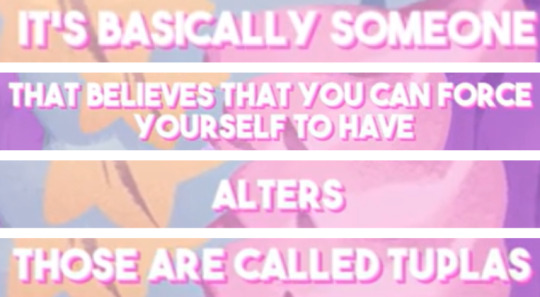
I mean, sure, created systems are a thing. Tulpas are the main example of this and the ones that have been studied the most. But there are created systems that aren't tulpas, such as in daemonism.
Also, plenty of traumagenic DID systems have intentionally created alters too, so it's weird to make "people who believe that you can force yourself to have alters" an endogenic system thing.
ALSO, basically no tulpagenic system I know actually uses the word "alter" to describe their headmates.


While most endogenic systems are plural without a disorder, it's bizarre to use this as your definition instead of just "an endogenic systems is plural without trauma" as it's actually defined.

Founded entirely on Tumblr???
Aspen, dear...
Are you... capable of reading? Here's the paragraphs you're looking at. Notice how it says natural system predated the word endogenic?

Yes, the word endogenic was first used on Tumblr... as a replacement of "natural system" or "natural multiple" that dated back to the 90s, before you were even born!
Here's one site mentioning natural multiples in their glossary in 2003:

And here's the origin in a page dated for 1998:
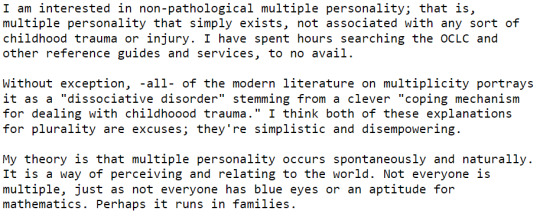
You clearly know NOTHING about the plural history that you're rambling on about.
And how am I only 20 second into this???


What do you consider a medical consensus again?
The World Health Organization's ICD-11, the diagnostic handbook used around the world, explicitly states that you can experience multiple "distinct personality states," the characterizing feature of DID according to it, without having a mental disorder:


That's the World Health Organization's official handbook!!!
I'm not sure what more of a consensus you need.
But I'll add that Tulpamancy is acknowledged as a real psychological phenomenon by Dr. Samuel Veissiere, psychiatry professor at McGill University.
And Dr Eric Yarbough, Distinguished Fellow of the American Psychiatric Association has stated that you can be plural without trauma or a disorder in a book reviewed and published by the American Psychiatric Association.
And these claims are undisputed. There is no peer reviewed paper by any psychiatrist that has claimed you need trauma or a mental disorder to be plural.
Now, onto the next round of misinformation!
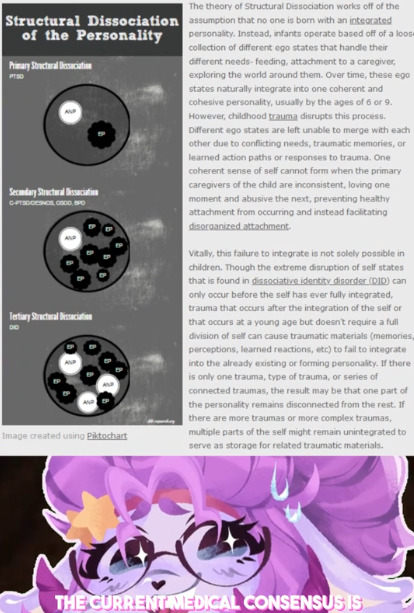

I recognize that page! That's DID-research! A glorified blog that convinced an entire generation that OSDD-1a and OSDD-1b were actual medical terms for disorders they could be diagnosed with!
(Spoiler: The aren't!)


Is that so?
It would probably be really inconvenient for this narrative if the creators of the theory of structural dissociation ALSO have said it may be possible people to form self-conscious dissociative parts of the personality without trauma, huh?
I mean, something like that would just completely destroy everything you're trying to sell and make you look even more like a hack who has no idea what she's talking about, wouldn't it?
...
...
...
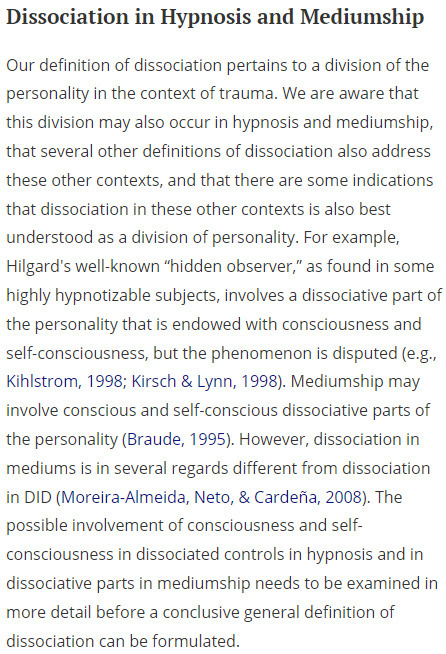
This paper is by two of the authors of the Haunted Self, which I probably shouldn't need to tell you since you're so knowledgeable about plurality, is the book that created the theory of structural dissociation of the personality.
Even the creators of the theory you're citing are saying plurality could have other causes.



Wouldn't that require you to actually know what endogenic systems actually believe? Or, you know, literally anything about plural history? Or anything at all? 🤔


Now we're back to ableist Aspen having no idea what Schizophrenia is and using it as an insult. 🙄



Aspen is not hiding her intent. Her goal is to spread hate, to come into our communities and bully us.
Aspen is a liar, a bully and an abuser.
But I hope I've also demonstrated pretty thoroughly that on top of that, she also incredibly ignorant.
She's ignorant of psychiatry. She's ignorant of plural history.
Every word out of her mouth on this topic is a lie she made up, and hopes her followers will be gullible enough to swallow, because while she may act confident in her misinformation, the fact is that she doesn't know anything about what she's talking about.
#syscourse#pro endogenic#pro endo#tiktok#systok#plural#plurality#multiplicity#systems#system#sysblr#actually a system#actually plural#psychosis#schizophrenia#bullying#cyber bullying#ableism#hate groups#aspenfrosten
231 notes
·
View notes